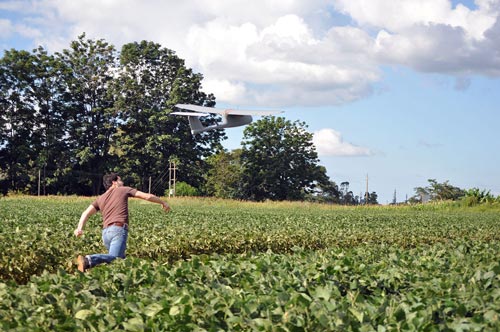Accord of international center and Spanish cooperative seed supplier will bolster farmers’ access to climate-resilient wheat in the Mediterranean Basin
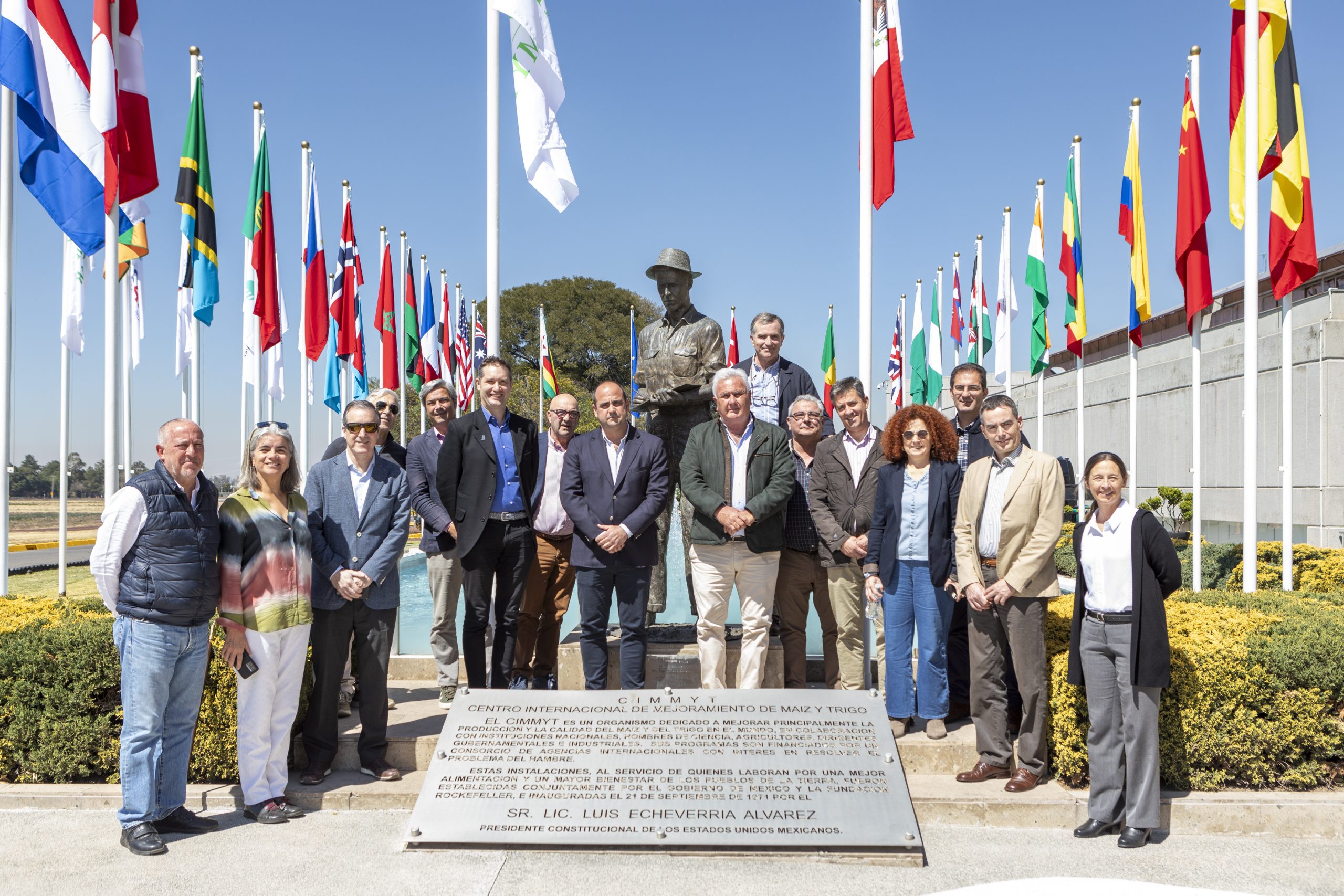
A new agreement between a leading Spanish seed company, Agrovegetal, and the international research center CIMMYT will help safeguard the regional availability of high-yielding, climate-resilient varieties of wheat, the region’s vital food staple.
The agreement was signed on 21 February 2024 at the Mexico headquarters of CIMMYT, a non-profit organization whose breeding contributions are present in half the maize and wheat varieties sown in low- and middle-income countries.
It comes at a time when severe drought threatens wheat crops in Southern Europe and North African nations such as Algeria, Morocco, and Tunisia and imports of wheat grain from traditional suppliers —Russia, the EU, Ukraine, and the US—are costly and constrained.
Since its formation in 1998 as a conglomerate of seed-producing cooperatives and a few industrial partners, Agrovegetal has been testing hundreds of CIMMYT breeding lines of bread and durum wheat (the latter used for pasta and couscous) and triticale (a wheat x rye hybrid) and returning high-quality data each year on the performance of this germplasm.
“The erratic rainfall, droughts, and crop disease patterns of Andalucía in southern Spain, where Agrovegetal tests the lines, are very much like those of North Africa, an important target region for CIMMYT genetics and agronomic solutions” said Bram Govaerts, director general of CIMMYT. “This new agreement, which guarantees the Agrovegetal-CIMMYT partnership through 2028, thus helps ensure CIMMYT’s capacity to offer outstanding, well adapted lines for the Mediterranean region, including North Africa’s national breeding programs, a great boon to farmers and consumers’ economies, food security, and nutrition.”
For its part, after several years of testing, Agrovegetal registers the most promising CIMMYT lines as improved varieties in Spain and markets their seed to members of its cooperatives.
“For us, the contributions of CIMMYT are invaluable,” said Ignacio Solis Martell, the company’s technical director. “Thanks to CIMMYT’s exceptional genetic material, Agrovegetal has become synonymous with resilience in Andalusia. Our varieties are renowned for their performance in the face of adversity, whether it be disease, drought, or other challenges.”
According to Govaerts, Agrovegetal offers an excellent model for burgeoning private seed enterprises in North Africa and elsewhere. “It shows how farmers, seed producers, and industry can join forces, skills, and resources to control seed, a critical factor in food production.”
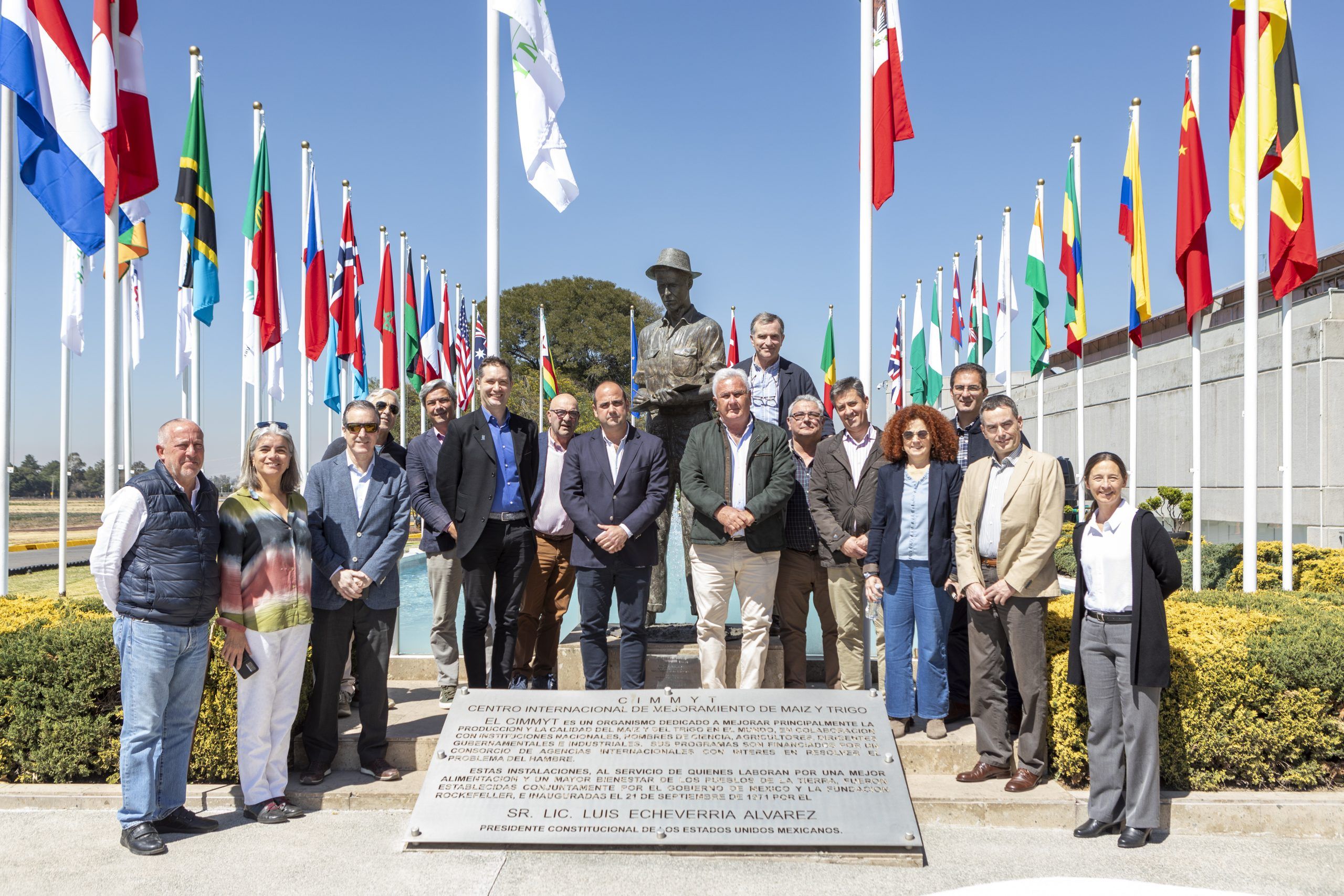
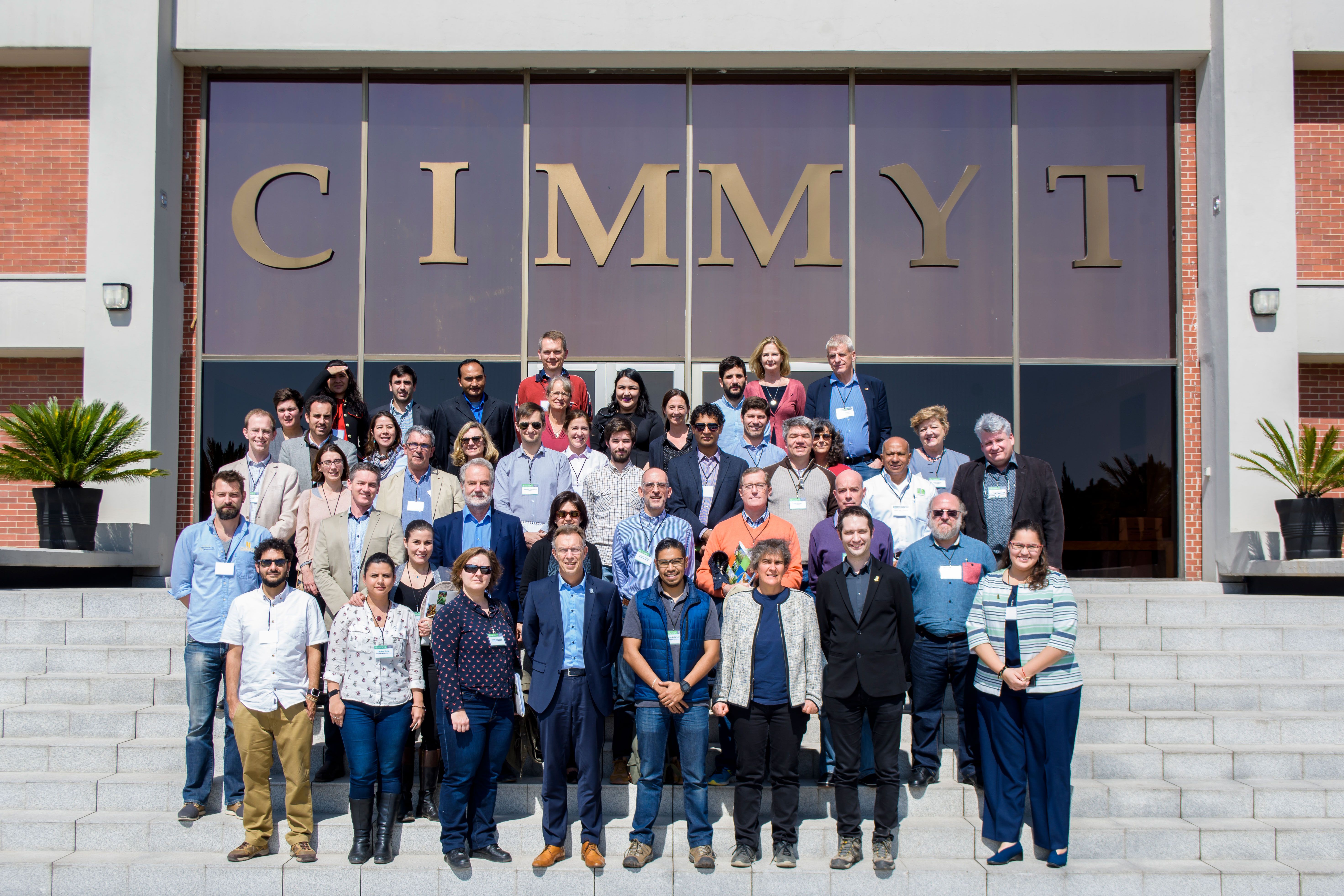
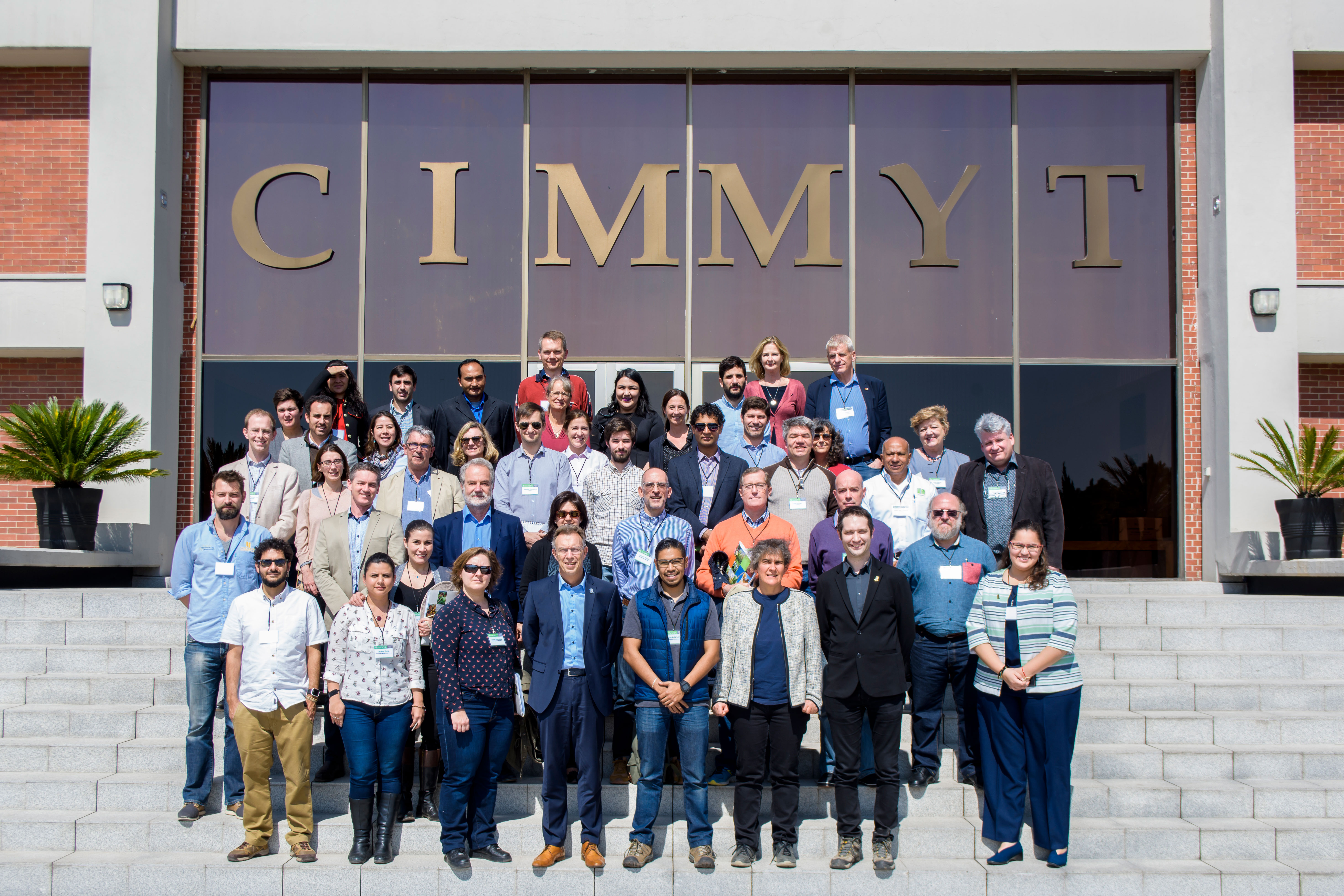
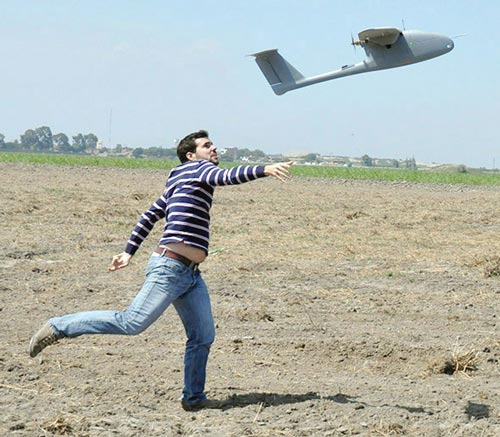 Training on the use of remote sensing from an unmanned aerial vehicle was given at INIAP-Peru’s Vista Florida experiment station on 1-5 June 2013. The course was organized by INIAP, the University of Barcelona, Spain, and CIMMYT’s regional office in Colombia. Remote sensing is used in precision agriculture and for phenotyping crops that are important for the region, such as maize, rice, and sugar cane.
Training on the use of remote sensing from an unmanned aerial vehicle was given at INIAP-Peru’s Vista Florida experiment station on 1-5 June 2013. The course was organized by INIAP, the University of Barcelona, Spain, and CIMMYT’s regional office in Colombia. Remote sensing is used in precision agriculture and for phenotyping crops that are important for the region, such as maize, rice, and sugar cane.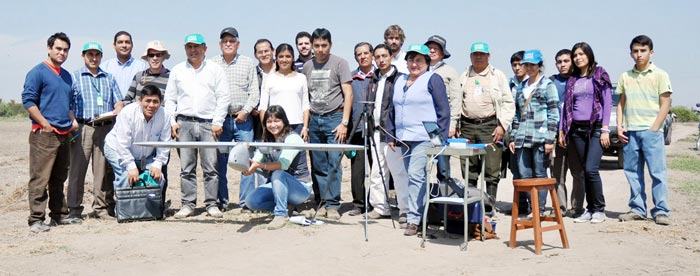
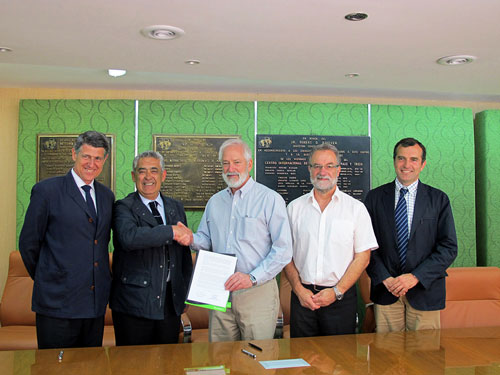 On 12 April 2013, CIMMYT director general Thomas Lumpkin and José Ortega Cabello, chairman of the Campo de Tejada cooperative in Spain, signed a five-year extension of a collaborative agreement between Agrovegetal S.A. and CIMMYT dating back to 1998. The objective of the agreement is to develop improved durum wheat, bread wheat, and triticale varieties.
On 12 April 2013, CIMMYT director general Thomas Lumpkin and José Ortega Cabello, chairman of the Campo de Tejada cooperative in Spain, signed a five-year extension of a collaborative agreement between Agrovegetal S.A. and CIMMYT dating back to 1998. The objective of the agreement is to develop improved durum wheat, bread wheat, and triticale varieties.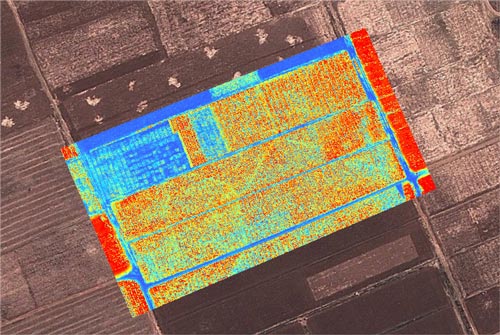 To free phenotyping of the varietal development bottleneck label, many new tools have been developed to enable an easier plant growth and development characterization and field variability. Until recently, these tools’ potential has been limited by the scale on which they can be used, but this is changing: a new affordable field-based phenotyping platform combining cutting edge aeronautics technology and image analysis was developed through collaboration between researchers from the
To free phenotyping of the varietal development bottleneck label, many new tools have been developed to enable an easier plant growth and development characterization and field variability. Until recently, these tools’ potential has been limited by the scale on which they can be used, but this is changing: a new affordable field-based phenotyping platform combining cutting edge aeronautics technology and image analysis was developed through collaboration between researchers from the 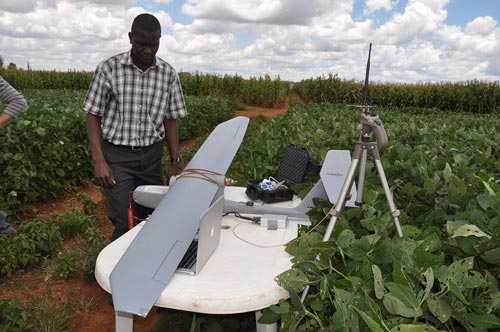 The new platform uses ‘Sky Walker,’ an unmanned aerial vehicle which can fly at over 600-meter with an average speed of 45 km/h. The vehicle has thermal and spectral cameras mounted under each wing, and its flight path and image capturing are controlled via a laptop using Google Earth images. Jill Cairns and Mainassara Zaman-Allah tested the platform at CIMMYT-Harare along with José Luis Araus (University of Barcelona), Antón Fernández (AirElectronics president), and Alberto Hornero (Sustainable Agricultural Institute of the High Research Council) to establish the optimal flight path (distance between plane passes and height) for plot level measurements. Field experiments were phenotyped for spectral reflectance and canopy temperature within minutes; these will be compared to results from the GreenSeeker.
The new platform uses ‘Sky Walker,’ an unmanned aerial vehicle which can fly at over 600-meter with an average speed of 45 km/h. The vehicle has thermal and spectral cameras mounted under each wing, and its flight path and image capturing are controlled via a laptop using Google Earth images. Jill Cairns and Mainassara Zaman-Allah tested the platform at CIMMYT-Harare along with José Luis Araus (University of Barcelona), Antón Fernández (AirElectronics president), and Alberto Hornero (Sustainable Agricultural Institute of the High Research Council) to establish the optimal flight path (distance between plane passes and height) for plot level measurements. Field experiments were phenotyped for spectral reflectance and canopy temperature within minutes; these will be compared to results from the GreenSeeker.